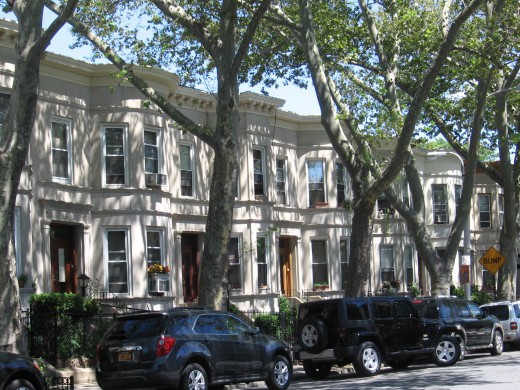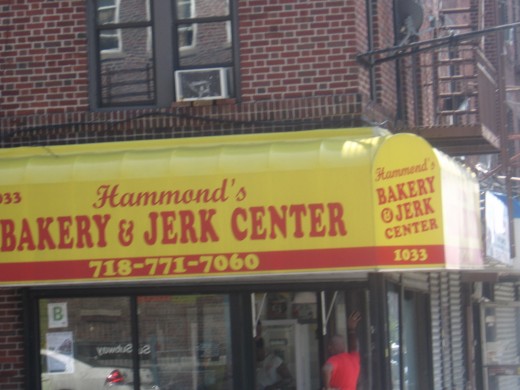How to Renovate a Townhouse in Brooklyn Volume 1 Edition 3

The Neighborhood Part One - Good Old Brooklyn
Hubbie and I never imagined that we would be moving to Brooklyn.
The story of how we met is quintessentially rooted in Harlem, centered around Convent Avenue with its triple-wide houses and tree-lined promenades that never fail to impress. We are emigrated Harlemites and thereby dedicated to our adopted and challenged neighborhood. “We’re staying uptown,” Hubbie would always say.
So what happened?
The truth is that we needed to be flexible. After ten years of living and two years of looking in Harlem, we decided that it couldn’t hurt to give Brooklyn a taste. We tried Red Hook, Carroll Gardens, Clinton Hill and Fort Greene, all before deciding on a little neighborhood the residents like to call PLG.
Back in the day, they just called it Flatbush.







It was three weeks into our escrow and while Hubbie and I had made good progress on the considerable paperwork required by the bank, we were also totally anxious about the outcome. So, we took a trip to Brooklyn one mild Saturday morning, in order to clear our heads and get acquainted with what we hope will be our new neighborhood.
We had chosen PLG mostly because the house we want is located there, and on the basis of my more ancient history in New York City when I dated someone from the area. I knew then that the neighborhood had great access to Prospect Park and about 7 different ways to get there on the train (you can take the B, Q, 2, 3, 4,5 or Franklin Avenue shuttle). Back in the day, PLG was populated primarily by West Indians, and the main services were a Western Beef and a Wendy’s burger joint on Empire Blvd.
As fate would have it, we ran into a colleague of Hubbie’s almost immediately after stepping out of the train at Prospect Park.
“What are doing out here,” Don asked? He was sipping on a latte and adjusting the handlebars on his expensive ten-speed.
“We’re moving out here,” Hubbie said with confidence.
“It’s a great neighborhood,” Don insisted, “I used to live in Harlem but I just like it out here so much more.”
So far, so good.
I peeled myself away from the conversation to walk the ½ block over to Prospect Park. There is an entrance to the historic park on Ocean Ave and Lincoln Road where families with tandem bikes, strollers and picnic baskets were streaming into the sculpted yet still bucolic environs of the massive green space. As I shot a photo of the park’s entrance gate, a woman pushing a stroller commented “it’s a great neighborhood,” in a sing song voice.
PLG is not one of Brooklyn’s hip neighborhoods. Yet.
In spite of its proximity to the park and to downtown Brooklyn, many residents of Brooklyn’s trendier neighborhoods like Williamsburg, Bushwick, and even adjacent Prospect Heights, can’t even point to PLG on a map. As a result, the population continues to be a good mix of long-time residents, who own most of the numerous large single-family homes, and newcomers who live primarily in the grand old apartment buildings that frame the neighborhood’s perimeter.
What PLG is is old. In fact, it’s downright historic.







PLG is quite possibly the oldest commuter suburb in the United States. Registered as a historic district in 1992, the wide, arcaded streets have names like Lincoln Road, Midwood Street, Maple and Sterling Streets, and bear row upon row of 19th century homes built in neo-classical styles from Georgian to Romanesque. They are large houses, typically measuring 3,000 square feet, and every single one of them has a front yard and a backyard.
All of this exists only four stops from the train station at Canal Street.



It is easy to forget how old Brooklyn is - a discovery that Hubbie and I made as we searched its neighborhoods for the perfect home. PLG is no exception. The neighborhood was originally settled in 1660, and is so steeped in American history, that there is an almost museum-like quality to the long blocks of hundred-year old houses.
One of the singular and most intriguing aspects of PLG is the 1893 covenant that still exists to maintain the single-family use of 600 of the homes that lie within its historic district. Now home to families from all corners of the world, these houses are proudly maintained and continue to function as living, single-family structures unmolested by the institutional vagaries and dysfunctions that have compromised many old homes in other parts of the city.




Did you know that a battle of the American Revolution was fought in what is now Prospect Park?
In its essence, PLG is much more than just wide streets filled with impressive houses. It’s a dynamic neighborhood facing the challenges and opportunities of continual change. It’s a place where the residents proudly hold on to their homes and their ways of life, and where the communities feel distinct and almost insular. There is some mystery about the place, and as you walk up the hill on Nostrand Avenue towards Medgars Evers College and Eastern Parkway, your ear notices the accents change from poetic Jamaican to melodic Haitian French.






Like all of New York City, PLG is a nation.








